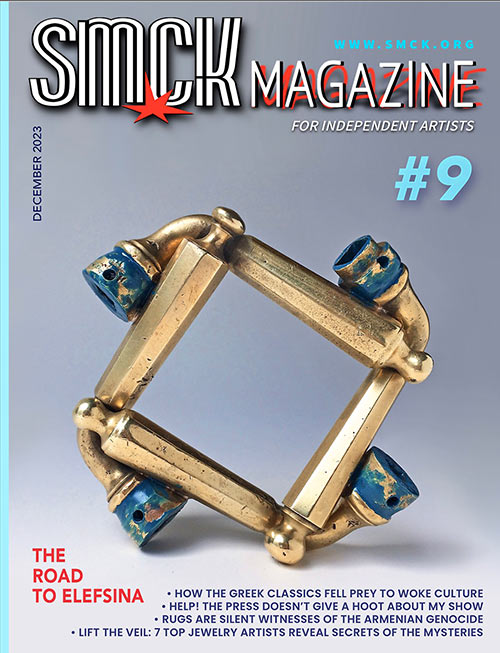MAKE UNDERSTANDABLE, AFFORDABLE, APPEALING, SEXY JEWELRY!
INTERESTING WORK IS BUILT ON RESEARCH, VISION, AND COMMITMENT.
Interview by Loukia Richards
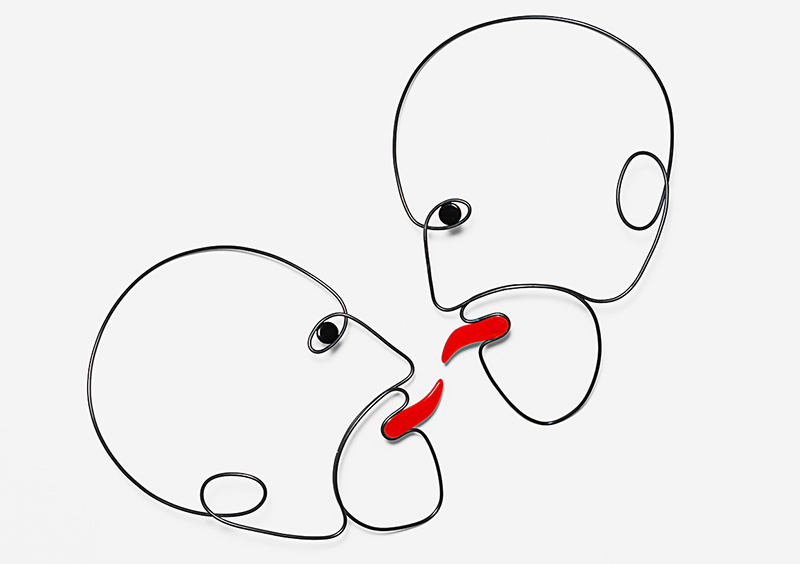 "Real Men" necklaces, 2021. Silver, acrylic. Photo: Rob Bohle.
"Real Men" necklaces, 2021. Silver, acrylic. Photo: Rob Bohle.
Artist, curator, publisher, activist. Paul Derrez, owner of the legendary Galerie Ra in Amsterdam, needs no introduction. Galerie Ra's heritage and its major aesthetical and educational role shaped generations of jewelry artists. Although Galerie Ra no longer exists, its legacy lives on. Reflecting on Galerie Ra's past triggered SMCK Magazine's discussion with Paul Derrez on the role jewelry can play in times of social discontent and uncertainty about the future.
SMCK: In the late 1960s and early 1970s, when you started your jewelry career, you were both witness and protagonist of a revolutionary mood in society. How do you see the situation in Europe today, with the war in Ukraine, the climate crisis activism, the energy shortage concerns, the increasing threat of poverty? How do these topics affect contemporary jewelry and influence its themes and values?
PAUL DERREZ: Although the Vietnam war and the nuclear threat were strongly felt in those days, there was still optimism that things could change for the better – in a kind of naive way, by wearing badges for example. Now we all realize how complicated it is to change so many social, political, and environmental themes drastically. And, during the last decennia, we became very individualistic. In jewelry, the focus also became very individual and personal. It' s time again for solidarity in thinking and acting.
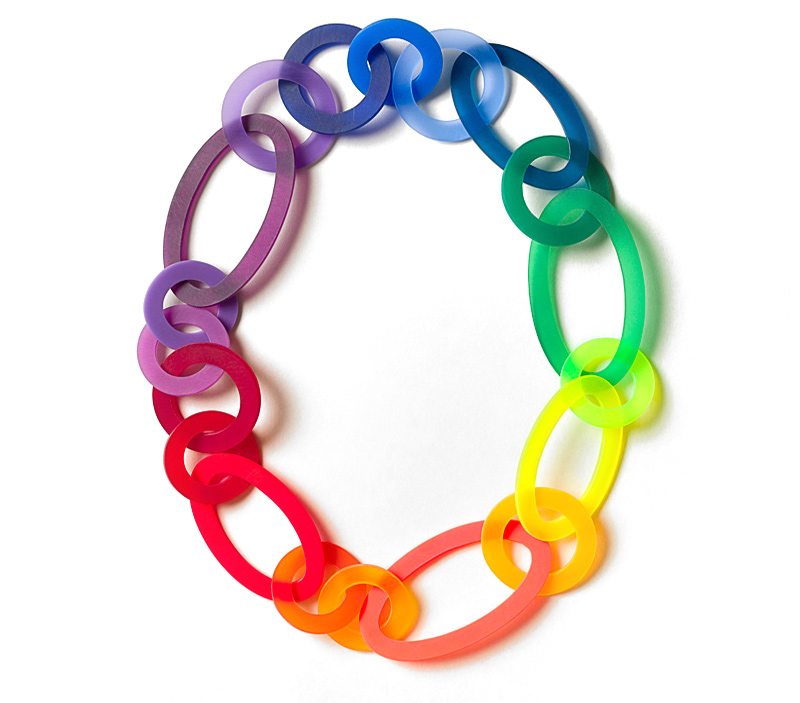 "Rainbow chain" necklace, 2021. Acrylic. Photo: Rob Bohle.
"Rainbow chain" necklace, 2021. Acrylic. Photo: Rob Bohle.
SMCK: Pride Power, Ukraine Chain, and Spoons for Food. Their sale revenues benefit good deeds, but this is not the end of their positive effect. In the past, various social and political movements, such as the suffragettes or the social democrats or the nuclear power opponents, designed their own jewelry or insignia, badges and pins to take pride in their cause and make themselves visible. Can jewelry make the public aware that there is a lot to be done against poverty, war, bigotry, hate ideologies? Are there rules for designing visually attractive and popular 'politically and socially aware jewelry'?
PAUL DERREZ: I think in the past the buttons, cheap and easy, worked well to tell a simple message. But nowadays society is so polarized that even such an expression of opinion can be dangerous for the wearer. If the jewel brings in money for a specific goal, there is more commitment involved. And yes, maybe we should organize a design competition for an Extinction Rebellion badge!
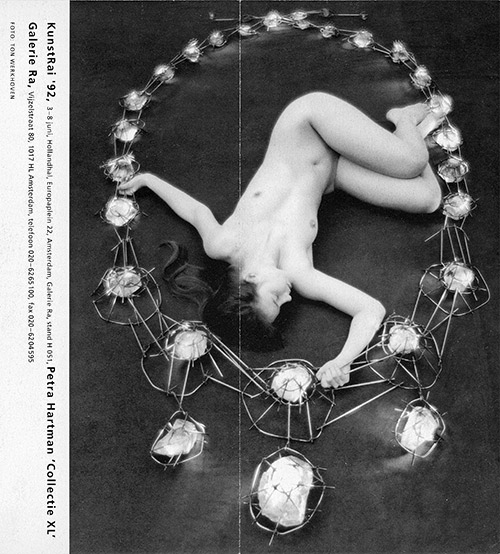
Announcement Ra Gallery for Petra Hartman exhibition KunstRai at fair, 1992.
SMCK: At the very beginning of your career, you and other jewelry artists faced the dilemma of the direction in which contemporary jewelry should move: towards fashion or towards art? Galerie Ra stood for the latter. Which direction do you think contemporary jewelry is heading in now?
PAUL DERREZ: Galerie Ra started with a very diverse program and offer. You could call it art, design, or fashion without strict borders or hierarchy. But more and more the scene moved in the art or quasi-art direction. But we do not need categories as interesting work is built on research, vision, and commitment.
SMCK: Visual communication, gallery identity, and strategy made Galerie Ra immediately recognizable as a distinctive 'brand'. Branding and selling are very important issues for artists and art dealers. However, many artists ignore the importance of the market, while in art schools the market is often demonized.
PAUL DERREZ: Yes, Galerie Ra was a brand, a self-created brand. It was built on aims and on a strategy to reach these aims. It was not artificial or copied. Artists should operate in this order, not the other way around.
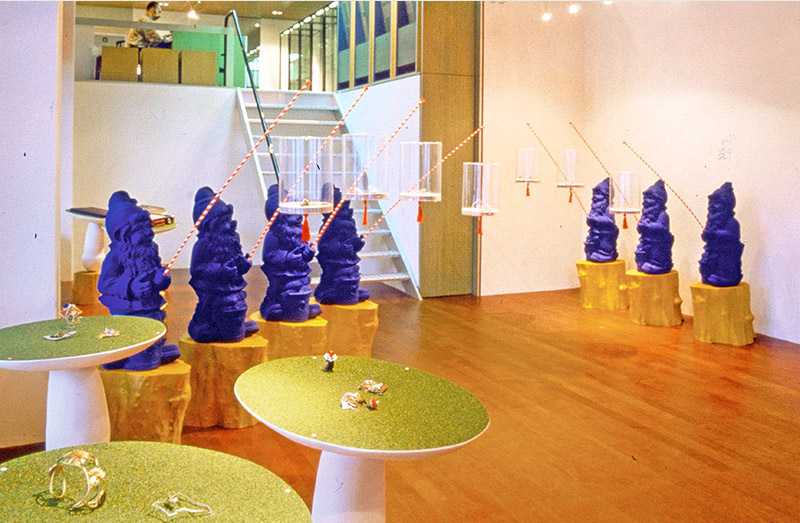 Ra Gallery, Vijzelstraat, exhibition Marion Herbst, 1993.
Ra Gallery, Vijzelstraat, exhibition Marion Herbst, 1993.
SMCK: How can contemporary jewelry artists promote and sell their jewelry in a highly competitive international environment that is also plagued by an unforeseen crisis with war, recession, post-Covid depression?
PAUL DERREZ: Specialized jewelry galleries still can play a role, but there is much more to do. Jewelry has to be brought to the street again. It does not need an artist label to communicate. It can connect directly to vivid themes in society. Jewelry is a unique medium and can be very fast and flexible: designing it day 1, making it day 2, wearing it day 3, and having learned from this process day 4!
SMCK: In your book Cherished, 40 Years Galerie Ra, you describe the shift in customers' behavior in the 1970s and 1980s as emancipated professional women could afford to buy their own jewelry. The feedback we get now from artists and dealers is that things are very tough. Why don't people buy art jewelry as much now?
PAUL DERREZ: When it does not appeal to people, they do not buy it. Make it understandable, affordable, appealing, sexy.
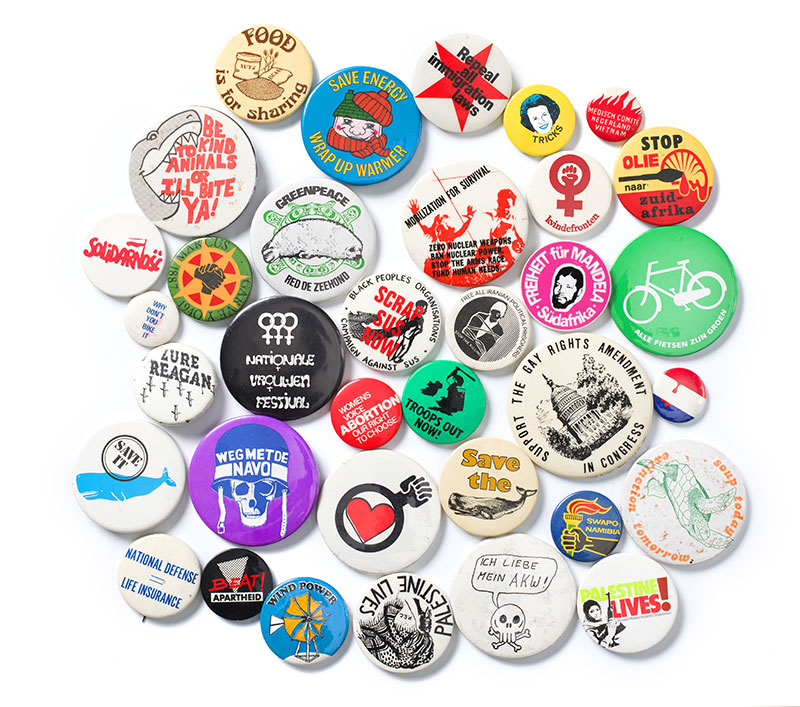 Buttons from the collection of Paul Derrez and Willem Hoogstede, 1978. Photo: Paul Derrez.
Buttons from the collection of Paul Derrez and Willem Hoogstede, 1978. Photo: Paul Derrez.
SMCK: Pricing art is an important and very difficult procedure many artists dread. How do you find the price for your jewelry?
PAUL DERREZ: To act as a shop makes these things easier. You just can try out which pieces at what prices would work. The prestige of the maker or the knowledge of the customer do not play a role. And that is a relief and gives freedom to experiment. It's a learning process that needs time and commitment.
SMCK: The promotional picture of your work for the group exhibition delight! at Veszprem-Balaton European Capital of Culture 2023 is amazing. You are wearing a pink overcoat and your Pride chain and you are the personification of the ageless joy of life. Many jewelry artists prefer conservative approaches when they shoot photos of their jewelry and choose young, rather bland models. What role does photography play in transferring the jewelry's message?
PAUL DERREZ: It's all about communication and sometimes provocation; humor and joy help a lot in this respect. I always wear my own and others' work with great confidence and pride. It's the easiest and jolliest way to show and advertise your own or others' work! My husband and I always choose a different pendant or necklace when visiting the bar on Sunday afternoon. People come up to us to see the new one!
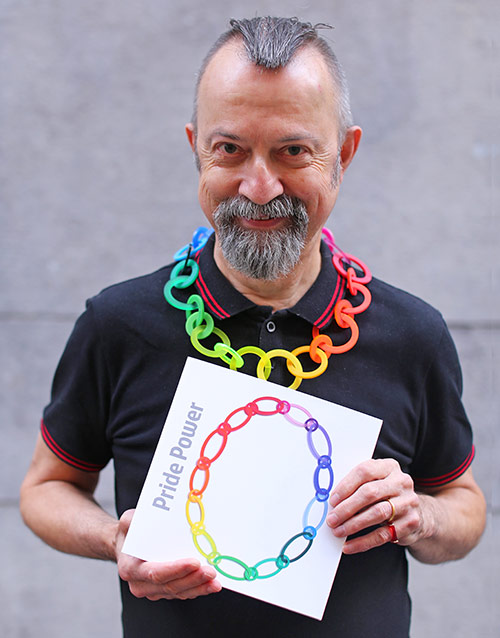
Paul Derrez with PRIDE POWER book, 2021. Photo: MisjaB.
SMCK: How should jewelry artists and galleries present themselves, document and promote their work today, with digital and social media demanding 24/7 availability and constant, but ephemeral, input?
PAUL DERREZ: From Galerie Ra's start in 1976, collecting, producing, and spreading information about developments in jewelry, was very important for me. It was all printed matter, although I recently found tapes with artist-interviews from the early Eighties. In the Sixties and Seventies publications were rare and minimal, but in the Eighties more and more catalogues and books were published and of better quality (color!). When Ra moved to a larger space in 1983, a book and catalogue corner and a mail-order-service were created, covering a wide range of publications, not limited to the Ra artists. I still like books, as they show a selection and a context. It's important to build a well-organized personal archive for study and research, for information and promotion.
SMCK: Do you plan a new publication of your sold-out book Cherished, 40 Years Galerie Ra?
PAUL DERREZ: No, that book and Galerie Ra are history now. The future is a new generation.
LINKS:
The Pool - Paul Derrez |
Wikipedia: Paul Derrez |
Galerie Ra









